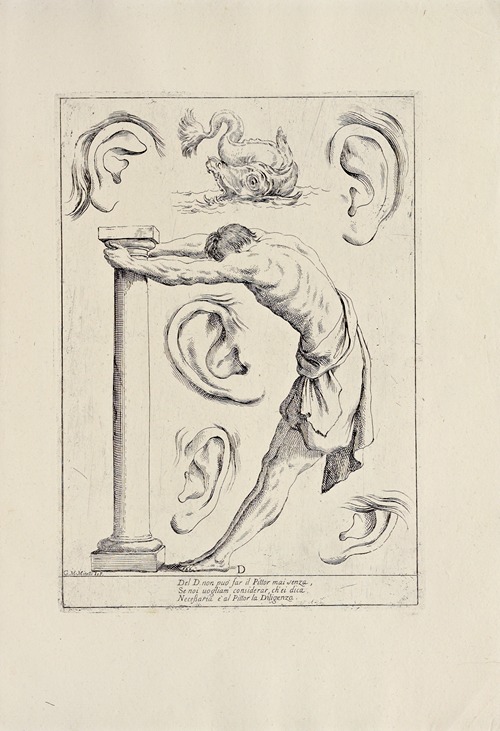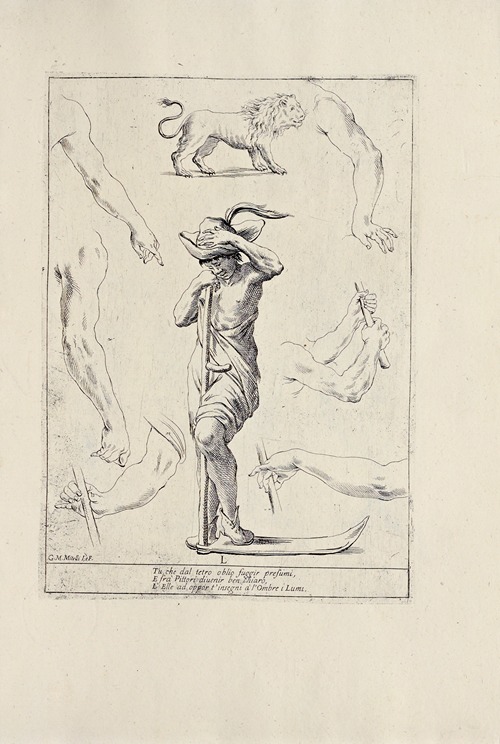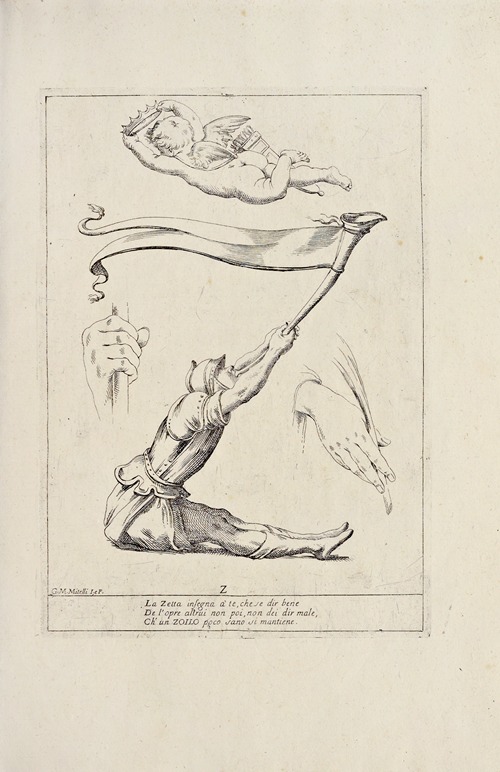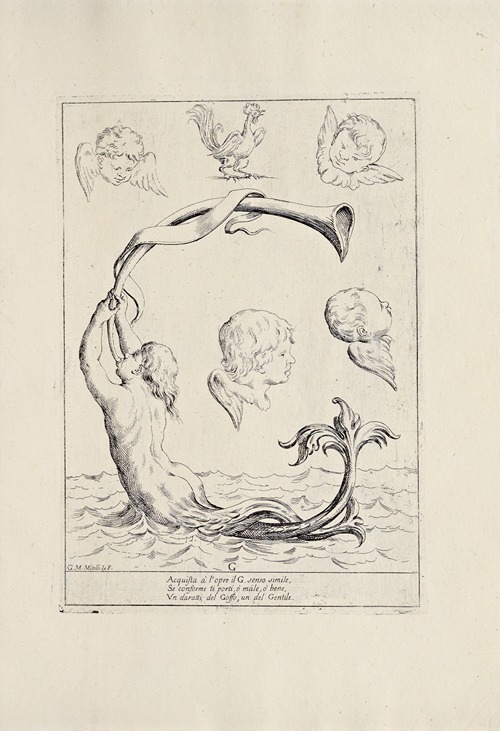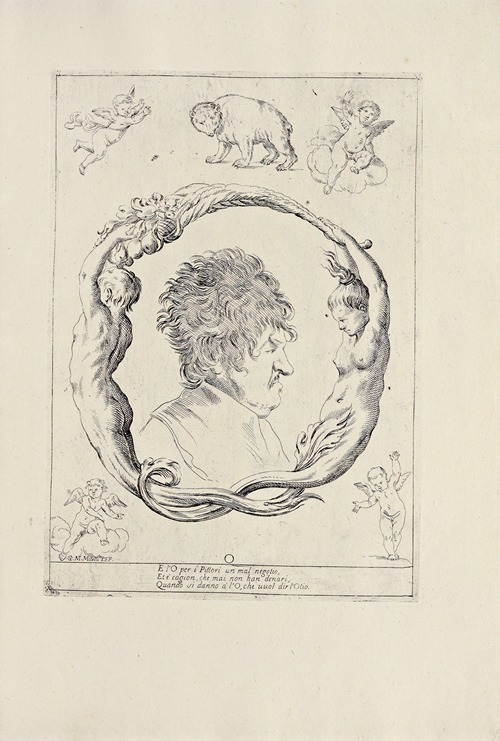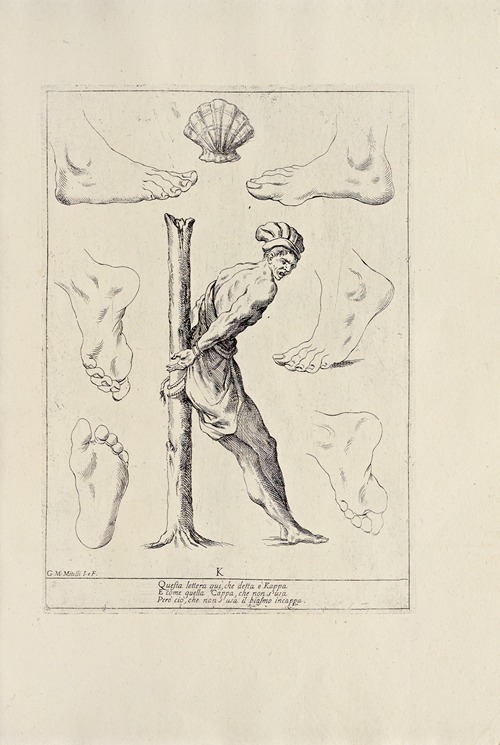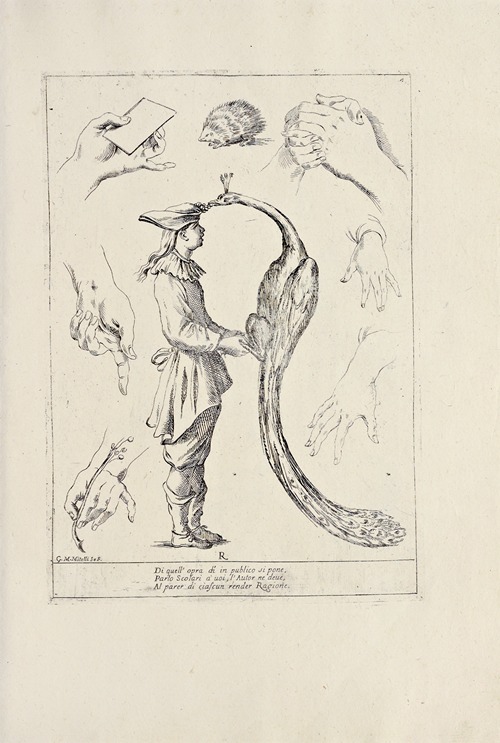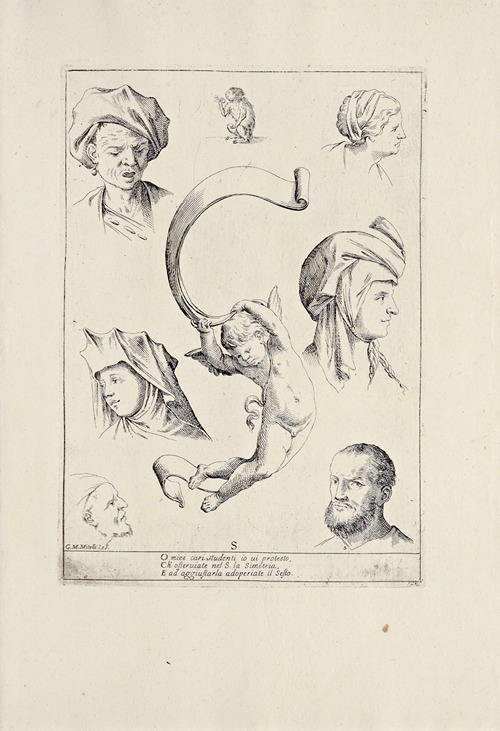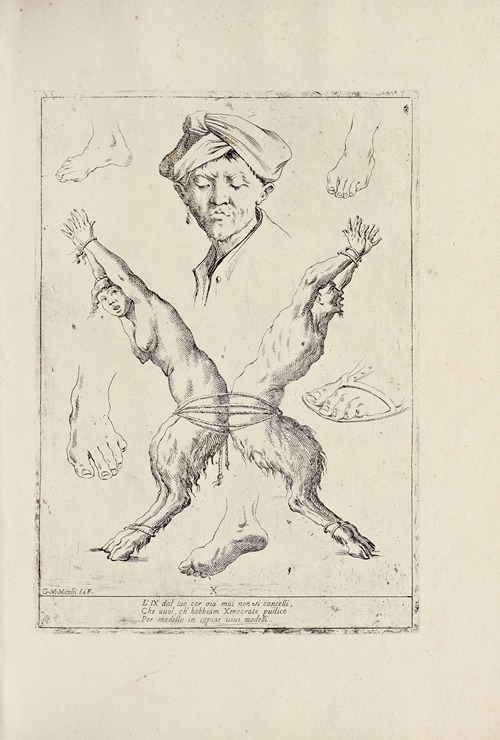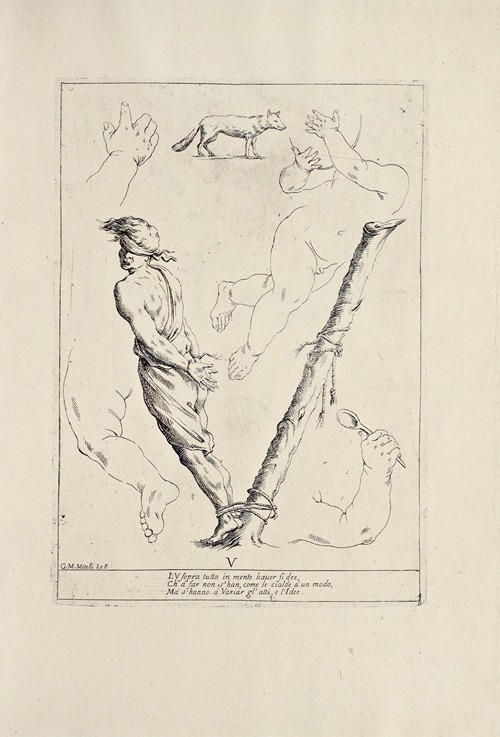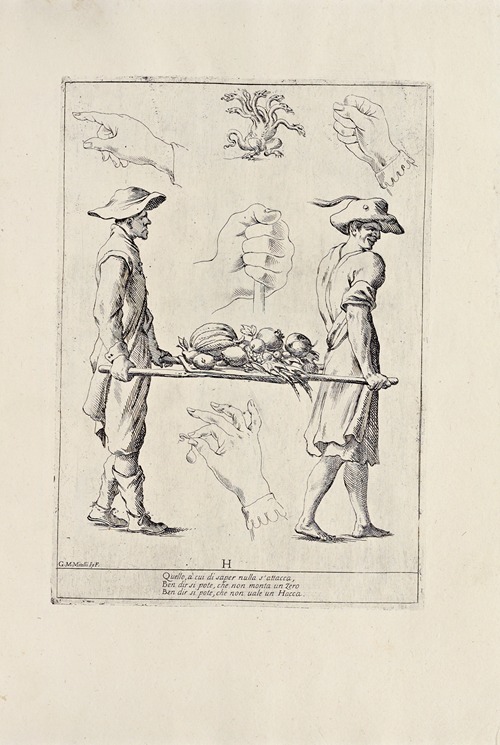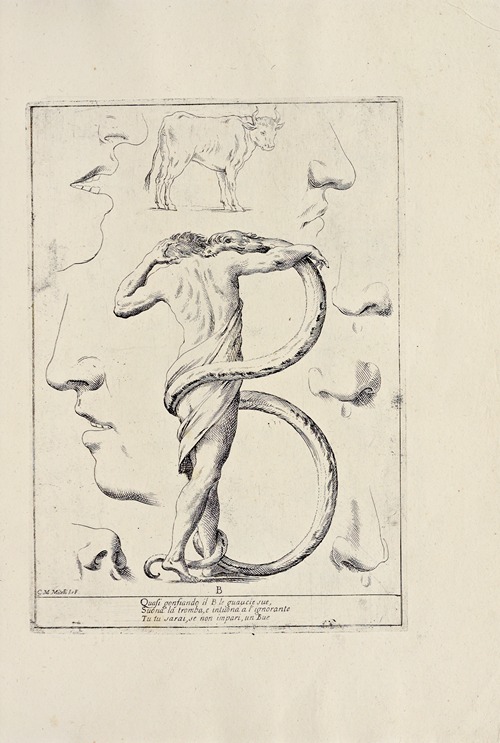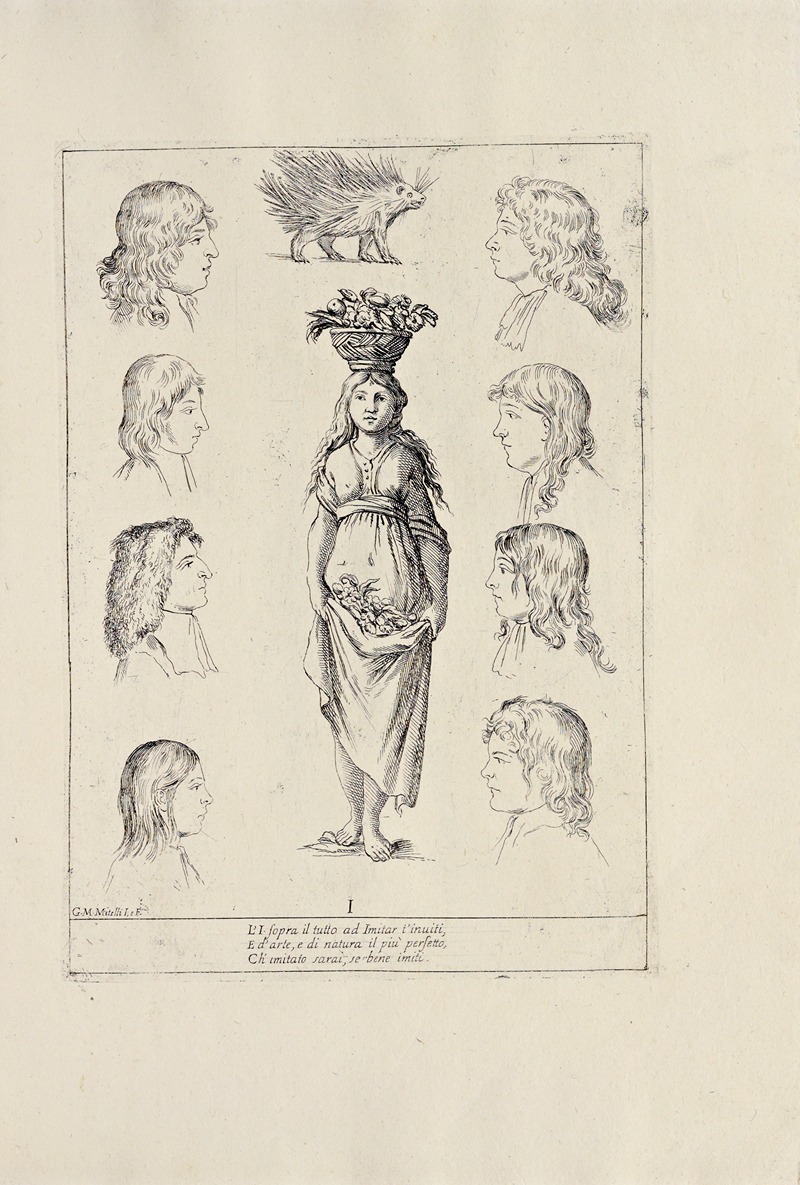
Giuseppe Maria Mitelli was an Italian engraver and painter of the Baroque period. He was the son of the prominent quadratura painter Agostino Mitelli. The younger Mitelli was best known for his prolific engravings, in a great variety of subjects, including scenes from grand epics to mundane page boards for games of chance using dice, Tarot cards, and an Iconophor with anthropomorphized alphabets. He also engraved genre subjects, allegories, moralistic scenes, but even some bizarre cartoons that could be interpreted as sometimes provocatively subversive, or presciently revolutionary, and sometimes imaginatively bizarre. He often depicted dwarfs engaged in buffoonery or satirical depictions of aphorisms, which recalls the Bambocciate di nani or arte pigmeo of genre painter Faustino Bocchi (1659–1742).
Giuseppe studied or worked under Francesco Albani, Flaminio Torri, Guercino, and Simone Cantarini; he had a long career of over 60 years in Bologna. Mitelli was a flamboyant character who was also a painter and sculptor. He enjoyed a broad set of physical activities including fencing, hunting, fishing, tennis, gymnastics, and acting.
Giuseppe Maria produced a series of engravings depicting Arts of the Street, published in 1660. This was part II of a book of engravings, in which part I, Diverse Figure, had been engraved by Simon Guillain II, and published in Bologna by Giovanni Atanasio Mosini. The inspiration for these works was either from Annibale Carracci’s drawings, or subsequent engravings by Simon Guillain II.
The second part, titled The Arts of the Street (Di Bologna. L’Arti per Via) celebrates the tradesmen and workmen who practiced their occupations in the streets of Bologna.
